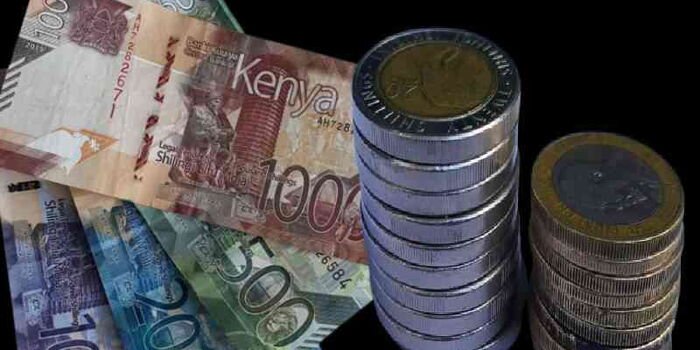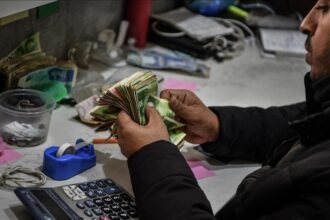The Kenyan Shilling on Wednesday strengthened marginally against the United States Dollar despite fears of a potential weakening due to political tensions in the country.
The local currency’s stability was attributed to an increase in the foreign currency inflow, particularly from diaspora remittance by Kenyans living abroad and tea exports.
Another reason for the Kenyan Shilling’s stability was due to a surge in tourists arriving in the country. An increase in tourists led to a hike in foreign currency as the visitors exchanged their dollars for the Kenyan currency.
Data obtained from the London Stock Exchange Group (LSEG) on Wednesday, October 30, showed the shilling trading at Ksh128.50 against the US currency compared to Ksh129 on Tuesday, October 29.
Former CBK Governor Patrick Njoroge holding Kenyan Shilling notes.
Photo
CBK
The consistent inflow of foreign cash mainly from tourism and tea exports has immensely helped to offset the negative sentiments following weeks of anti-government protests that led to a delay in the disbursement of the International Monetary Fund (IMF) loan.
For the better part of August, September, and October this year, the local unit remained in a tight band, trading between Ksh129 and Ksh130 against the US dollar.
While projecting the local unit’s fate, forex experts revealed that the Kenyan shilling was expected to weaken slightly against the green buck in the coming weeks despite the current stability.
The analysts also anticipated a resurgence of the dollar in the coming weeks even as the United States prepares to hold its elections in November this year.
Since February this year, the shilling has maintained an incredible streak against major currencies globally, strengthening by 17 per cent, according to data from the Central Bank of Kenya.
The shilling’s sudden rebound against the dollar was majorly attributed to the government’s decision to repay its Ksh310 billion ($2 billion) Eurobond loan which matured on June 23 this year.
The local currency’s stability for a better part of the year was also attributed to an oversubscription of infrastructure bonds by foreign investors. In February this year, the government moved to raise Ksh70 billion for infrastructural development, however, President Ruto’s administration received three times the amount.
Frequent interventions by the central bank also boosted the shilling as the regulator stepped in to reduce the volatility of the Kenyan currency and reduce pressure on the foreign exchange.
A photo depicting a person holding Kenya Shilling notes and US Dollar notes
Photo
Janta Kenya





















